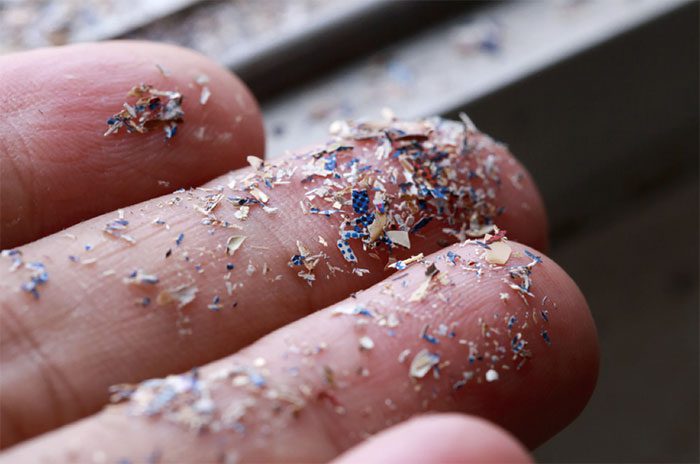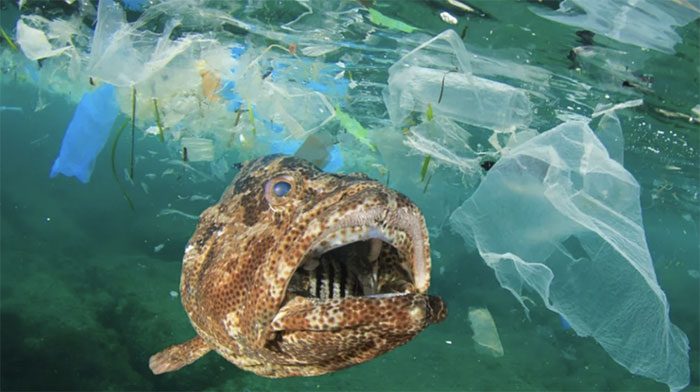Tiny microplastics accumulating off the coast of Japan have raised significant concern among scientists, especially considering that the level of plastic pollution here is 260 times higher than in the Mediterranean Sea, previously regarded as the most polluted area.
On December 7, SCMP reported that Japanese scientists were astonished to discover large quantities of microplastics accumulating on the seabed off the eastern coast of Honshu Island. In some areas, the layer of microplastics reached up to 600 pieces per gram of dry sediment.

Microplastics are tiny but pose significant dangers – (Photo: SHUTTERSTOCK).
The Japan Agency for Marine-Earth Science and Technology (Jamstec) collaborated with universities and private companies to conduct this research. They published their findings in the academic journal Marine Pollution Bulletin in October 2023.
The results revealed that the level of plastic pollution on the seabed off Honshu Island is 260 times higher than that in the Mediterranean Sea. Previously, scientists believed that the Mediterranean Sea was the area with the highest concentration of microplastics in sediment worldwide—5,500 times more than in the North Atlantic.
The research team collected samples from seven different locations. The first samples were taken from a depth of approximately 855 meters off Sagami Bay. Other samples were collected from the abyssal plain (a type of terrain on the deep ocean floor, covering nearly 50% of the Earth’s surface) at a depth of nearly 6,000 meters, 500 km from the coast.
The remaining samples were gathered from the Japan Trench, located about 250 km from the shore and reaching depths of 9,232 meters.
The findings indicate that the density of microplastics in the abyssal plain is ten times higher than in other locations. Larger plastic pieces are drawn in by water currents across this terrain, accumulating and eventually sinking to the seabed.

Marine creatures are facing pollution caused by humans – (Photo: BENZINGA).
Dr. Masashi Tsuchiya, the deputy team leader at Jamstec, expressed surprise at the alarming state of plastic pollution: “Microplastics are very difficult to see with the naked eye, so we couldn’t have known about this. But (upon receiving the results) we were not expecting them to have accumulated to such an extent.”
Dr. Tsuchiya speculated that the Kuroshio Current—one of the largest ocean currents in the world—has transported a significant amount of waste from Southeast Asia and East Asia (including Japan) to these waters. This waste gradually accumulates on the ocean’s surface, contributing to the aforementioned plastic pollution.
Professor Guangwei Huang from the Hydrological Environmental Research Laboratory at Sophia University in Tokyo agreed that the level of plastic pollution offshore of Honshu Island is concerning and warrants investigation into its sources.
|
Over 8 million tons of plastic waste dumped into the ocean each year Dr. Tsuchiya noted that sharp plastic edges can damage the digestive tract and internal organs of marine organisms. Previously, scientists have repeatedly discovered large amounts of plastic in the stomachs of birds and marine fish. He also mentioned that chemicals in plastics (such as stabilizers and phthalates), along with persistent organic pollutants (like PCBs and DDT), can leach into seawater. Studies indicate that these substances may pose cancer risks or reproductive abnormalities. Completely eliminating microplastics is impossible, Dr. Tsuchiya asserted that the most effective way to reduce plastic pollution is at the source by preventing waste discharge. He emphasized that modern society cannot do without plastic but must “manage its use responsibly.” Scientists estimate that over 8 million tons of plastic waste are dumped into the oceans each year. These plastic pieces will degrade through processes such as exposure to ultraviolet rays, high temperatures, and abrasion by rocks or sand, resulting in microplastics smaller than 5mm. |



















































